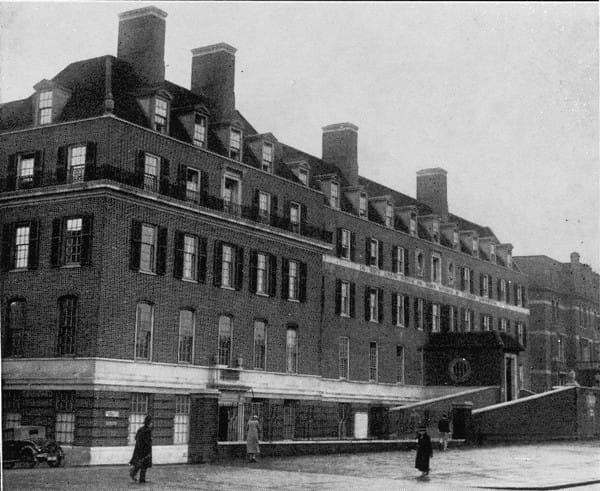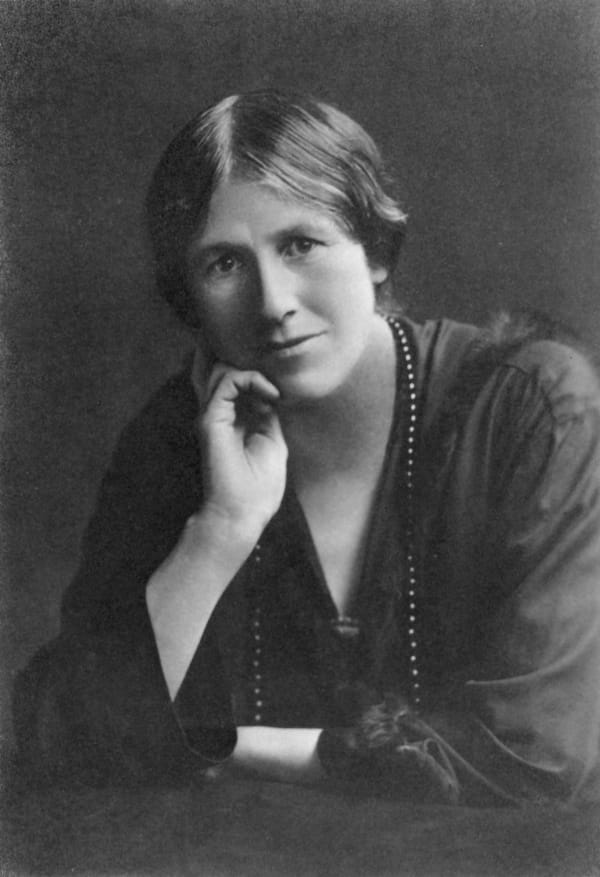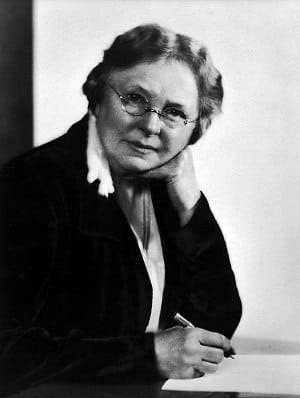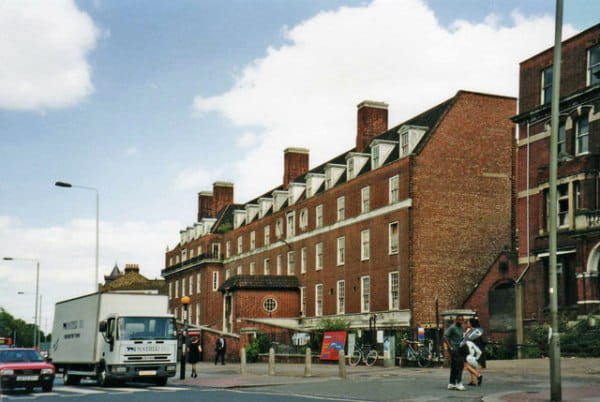Eleanor Davies-Colley (1874–1934) and the South London Hospital for Women (1912-1984)
07 Sep 2018
Corinne Hogan
Above: “South London Hospital for Women, Clapham Common”. From the Wellcome Trust via Wikimedia Commons. Licensed under the Creative Commons Attribution 4.0 International license.
The South London Hospital for Women was a hospital with a difference: staffed entirely by women, it was known as an “Adamless Eden” as the only male staff in attendance were the gardener and the engineer, all the other staff being female. Although the ninth hospital, designed with the dual purposes of providing women who wanted to practise medicine with jobs and treating women who wanted to be cared for by women doctors, to be established in the period, it still had unique features that set it apart. Patients, except children under the age of 7, were also female. The need for the hospital was clear in that another all-female hospital set up as the The New Hospital (later the Elizabeth Garret Anderson Hospital) was oversubscribed and was having to turn prospective patients away. Despite the obvious demand, the fundraising efforts begun in 1911 by Eleanor Davies-Colley and her fellow founder Maud Chadburn were met with a stinging rebuke in the form of a very dismissive letter in The Times written to decry the project as unnecessary and simply a means of letting women practice in the male domain of medicine. The letter appears to have worked counterintuitively, as an enormous anonymous donation and endowment followed that allowed work to start almost immediately!
Above: “Portrait of Eleanor Davies Colley, founder and Surgeon of South London Hospital.” Image provided for use with kind permission of Stephen Burch.
Right: “Portrait of Maud Mary Chadburn, founder and Surgeon of South London Hospital. Medical Women's Federation”. From the Wellcome Trust via Wikimedia Commons. Licensed under the Creative Commons Attribution 4.0 International license.
After such a singular start, and once built and opened in 1916, the hospital was also in a class of its own – adopting a concertedly modern approach to just about everything. The 80 bed inpatient part of the hospital, like the outpatient, catered to women of all backgrounds. There were wards on which you paid whatever you could afford towards your care (however small that amount) and for the wealthy there were areas with private rooms charged at a flat rate of between 1 and 3 guineas a week (equivalent to around £88–266). Every ward had a balcony and a bathroom with wide doors and white marble walls (believed at the time to be healthier non-porous material and therefore safer for patients). Nurses’ quarters and accommodation for serving staff and porters were also spacious and designed with sociability and comfort in mind; for example, the bathrooms in the nurses’ quarters included not only areas to allow the women to shampoo their hair, but also heated rails on which to dry it. For patients, the innovations extended to a lift that ferried beds from the wards to the open-air roof for a dose of fresh air and special entrances that kept the infectious wards safely away from the traffic of the rest of the hospital and vice-versa. The staff policy, of having all women doctors, nurses and even porters, was maintained throughout the life of the hospital until its closure. Eleanor Davies-Colley maintained her association with the hospital throughout her career.
Above: “South London Hospital for Women, Clapham Common South Side” by Christine Matthews. From geograph.org.uk via Wikimedia Commons. Licensed under the Creative Commons Attribution-Share Alike 2.0 Generic license.
The manner of its demise in 1984 happened to be just as remarkable as its beginning, in that the closure only occurred after some very significant community resistance from local women of all walks of life. What started as a “work in” became a 9 month occupation. The site was later acquired by Tesco, but ultimately the building was made into flats that preserved the front façade but demolished the interior, as Historic England had refused to list it, and replaced it with a Tesco and car park tacked on to the side and back. Lost Hospitals of London has more detail on the history of the hospital and there are some brilliant photographs of the hospital at Lambeth Landmark, the Lambeth Archives image collection website.
Corinne Hogan, Senior Information Assistant




